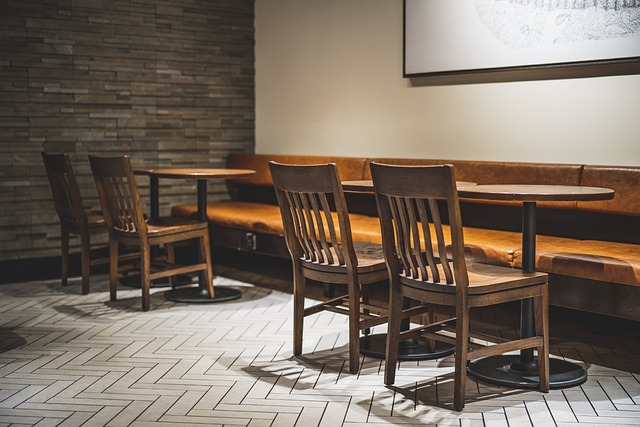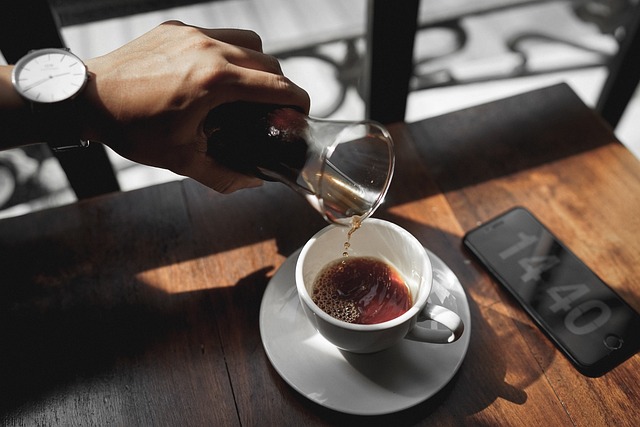How to refinish a coffee table? A coffee table can be given new life and made to look fantastic in your home by having it refinished, whether it was a thrift store find or a piece you’ve had for a long time. For DIY beginners, it’s a great project.
Do not be concerned if you are unsure of where to begin or what you will need. From sanding off the outdated finish to applying a fresh one, we’ll walk you through every step of how to transform your coffee table.
Table of Contents
Required Materials
Gather all the necessary materials before you begin to transform your dining room table or any other wooden furniture. Here’s what you’ll need:
- All-purpose cleaning sprayand a cloth or paper towels
- 60-, 120-, and 360-grit sandpaper
- A block sanderor an orbit sander
- A clean, dry tack cloth
- Stain(or primer and paint)
- Paint and varnish remover(stripper)
- Putty knife
- Paintbrush
How to Refinish a Coffee Table?
Understand Your Wood Table
Furniture designer Andrew Hamm cautions to “pay attention to the level of detail on the piece before you start. “Super ornamental furniture is going to be tedious,” he says. “Avoid refinishing furniture with too many hand-carved details, scrollwork, or sharp corners if you’ve never done it before.”
In comparison to veneer, which is typically thinner, solid wood is a better candidate for refinishing. Laminate is made of plastic, so refinishing it won’t work. If you’re not sure what kind of wood surface you’re working with, Hamm recommends looking at the grain of the wood: “It is veneer if the pattern runs the length of the grain and was produced by rotary-slicing a single log into a sheet.”
Clean Your Wood Table
The biggest mistake first-timers make with refinishing is not reserving enough time to clean, or prep the surface. Remove all dirt, oil, and grease from the entire table before you remove the current finish. If not, you risk sanding the debris into the wood. Make use of common cleaning supplies, such as an all-purpose cleaner.
Strip the First Finish
There are a few options available when it comes to the old finish. You can use a chemical stripper to remove the original coats of paint or stain; just make sure you’re following proper instructions on the product label. In general, you should work in a well-ventilated area, wear rubber gloves, and have long sleeves. Apply a putty knife or scraper to the wood’s grain to remove the first finish after the stripper has softened the finish. To make the table’s surface as smooth as possible, sand it down after with 80- to 120-grit sandpaper.
You could also sand the table’s original top coat off using coarse sandpaper. Sand in the direction of the grain beginning with the 60-grit sandpaper. Although you can sand by hand, a mechanical sander makes the process much, ahem, smoother. Finish by wiping down the table with a tack cloth so it’s free of dust, then sand the surface again, this time with your 120-grit, to polish the wood.

Apply Paint Or Stain—or Nothing
Furniture oils can be applied again in the future to bring out the rich colors in the wood without leaving a shine. They penetrate the wood and protect it below the surface. For finishing purposes, use tung or Danish oils, teak oil for denser woods, or both. Find a stain you like if you don’t like how the wood looks naturally. Don’t take a shortcut by spot-refinishing isolated damage or a chipped section: “No stain will match the way your grandmother’s walnut table aged in the sun of her dining room for 60 years,” Hamm says.
If you’re staining, use a wood conditioner; it can help create a uniform finish by getting the surface ready to absorb the stain.
After wiping everything down, apply one coat of stain in the direction of the wood’s natural grain using a paintbrush. After letting it dry, gently sand any bumps or lint with the finest sandpaper (360-grit), then dust it off. The depth of color you want will determine how many coats you should apply. If you’re going to paint after priming, sand the primer coat as soon as it’s completely dry. Then, start painting. For a piece of furniture that receives a lot of use, like a dining table, Hamm cautions that paint isn’t as long-lasting as an oil treatment.
Finish
You’re done if you use oil to refinish a table. To help with longevity, Hamm advises adding a clear coat to stained and painted surfaces; look for polyurethane or polycrylic, both of which call for two coats. Using fine-grit paper, sand between coats. Once your heirloom coffee table is looking good as new, style it to your liking.
Read about
FAQs
What Kind of Stain Do You Use on a Coffee Table?
Oil-based stains are the best wood stain for furniture or any large wood surface because of the slower drying time, which gives the piece a more even finish.
Can You Stain Coffee Table?
Stain the coffee table if you want a darker or different-colored wood finish. Using a 4 in (10 cm) paintbrush and long, smooth strokes, stain the wood with your preferred wood stain, going with the grain.
What Do You Seal a Stained Coffee Table With?
Make sure the sealer is compatible with the varnish if you must seal stain or filler before applying polyurethane. Otherwise, use a penetrating resin sealer. If you want a smoother finish, you can add polyurethane on top of this to finish the wood completely.
What is the Best Finish for Coffee Table?
Go with a polyurethane varnish. It usually looks fantastic and is extremely tough and heat resistant. Oil-based and water-based formulas are both suitable options, but most oil-based polys will give the wood a slightly amber tone (which I like), and it dries slowly.
Do You Need to Seal a Table After Staining?
Apply Sealant as Needed
Applying a topcoat sealer is not required, but a finish protects the stained wood from scratches and keeps it from fading over time. Apply one to two coats if using a brush to apply a polyurethane finish.


